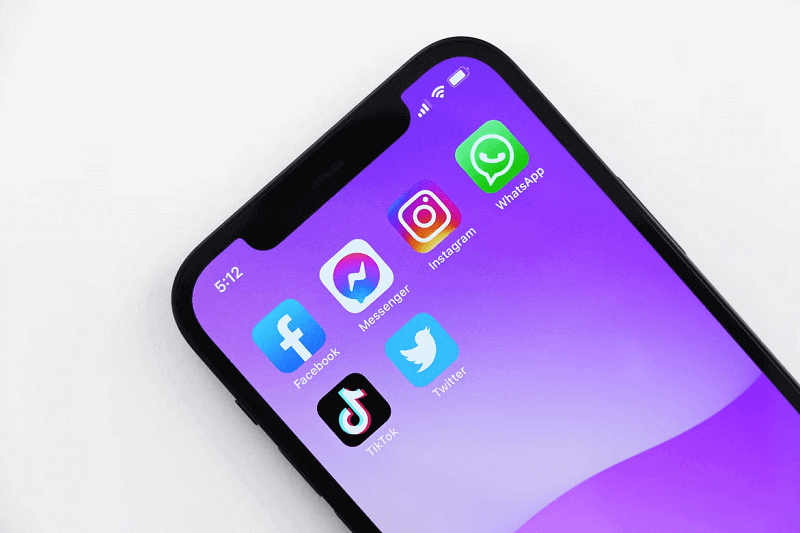
Let’s face it. Who hasn’t received those pushy emails and calls at the most unexpected hours?
Well, consider yourself lucky if you haven’t.
Gone are the days when making unrequested calls to customers was embraced as a symbol of customer fulfillment. Customers no longer wish to receive those unsolicited and evidently fake ‘Hello’ calls, especially from a brand with which they haven’t interacted before.
One key reason that has reduced the appeal of outbound marketing techniques like cold calling and bulk-emails for lead generation is the need to be adequately informed.
Customers want to be armed with information about the products before they even initiate their first serious conversation with brands. This shift in consumer behavior has become more prominent over the last decade or so, and we believe the trend will only continue to rise.
Therefore, brands are left with no choice but to aggressively pursue the more subtle and fundamentally-powerful marketing strategies of inbound marketing and lead generation.
Our objective today is to give you hands-on knowledge about inbound lead generation and the best inbound lead generation strategies applicable across most domains. Let’s go!
What is Inbound Lead Generation?
We understand that many of you might already know what inbound lead generation means. But, let’s take it a step at a time.
Inbound lead generation is a pull strategy where marketers publish content talking about their brand and products across multiple online platforms without individually targeting any customer.
If, upon reading or watching this content, the customers want to know more and personally engage with the brand, they themselves approach the brand instead of the brand contacting them directly.
Thus, the first step in generating direct engagement is initiated by the customers, rather than the brand. This strategy has myriad benefits and possesses immense potential in driving inward traffic for your brand. Let’s take a look at the advantages first!
Key Benefits of Inbound Lead Generation Strategies
Inbound lead generation strategies are meant for the long-haul. Such strategies take relatively more time to drive results, but are the ultimate way of generating business leads in the long run. Let’s take a look at the benefits to know why:
1. Generate quality leads
The last thing you want in your sales funnel are low-performing or non-performing leads that have no interest in engaging with your brand. Such leads add a huge strain to marketing & sales budgets, and more often than not, fail to bring any tangible results.
With inbound lead generation, you are guaranteed to get quality leads that have at least some level of interest in your product. The pre-existing interest factor among customers gives your team a ready ground to build a conversation and promote your brand more effectively.
2. Reduce lead generation expenses
Lead generation is a lot about hits and misses. You must ensure that your budget is being used judiciously at all times as strategies need to be modified if they do not work in your favour.
Considering that the strategy hits bulls-eye– with inbound lead generation, the costs are significantly lower as the resources remain live for a fairly long time (even forever, in many cases), reducing their per-unit economics with the passage of time.
For example, you are a SaaS company that decides to publish a blog covering the most widely used marketing tactics across industries, and integrate a brief section explaining how your social media management tool can help the prospective target audience in managing campaigns, while also including a ‘Reach Out to Us’ form at the end.
The blog becomes an instant hit and people start flocking to you via the form to know more about the tool. Now, given the success of your blog, you can let it stay alive forever while making only minor updates and changes. This way, you get a perennial source of inward leads, the cost of which only reduces with every new lead generated.
Another advantage with inbound strategy is that you can even get started with a zero dollar budget. Just take the example mentioned above, if you have the knowledge to chalk up an article yourself and add a simple contact form link, the budget boils down to effectively zero dollars.
3. Accelerate brand building
Inbound lead generation strategies inherently involve tools and techniques that require brands to share information about the products, and the brand at large.
It may involve you sharing your brand ethos and philosophy, BTS scenes about new products, product origin story, design concepts, and lots more. All these activities give a deeper insight into your brand and help in spreading your journey in a positive context, ultimately contributing to building your brand image and goodwill.
4. Build trust and enhance engagement
Customers appreciate brands that respect their personal space and don’t bombard them with messages and calls. Inbound lead generation is centered around such a model where the first step in initiating communication is left in the hands of the customers. Such an approach inevitably leads to brands talking to customers only when the customers want to, thereby improving the quality and propensity of engagement.
Customers love to know as much as they can about the brand from which they are considering making a purchase. More the information they have, greater the transparency, and consequently higher the trust factor. And, nothing beats the edge of having a customer that completely trusts you.
Inbound lead generation activities are based on the concept of sharing as much brand content and information as possible, thereby helping to build trust among customers while generating leads.
5. Promote organic traffic
Inbound lead generation promotes interaction and nudges customers to find out more about your brand. It never imposes anything on them.
This subtlety in approach attracts customers and encourages them to reach out to you themselves, thereby generating organic traffic. Such unforced interest promises a higher engagement rate and better conversions while allowing you to develop long-lasting relationships with your customers.
6. Improve revenue generation
Better quality leads, enhanced brand awareness, and higher trust ultimately help you achieve the business metric that matters the most– sales. A wider sales pipeline consisting of a higher number of qualified leads gives a boost to the revenue forecast and keeps the cycle running more smoothly.
Top 7 Inbound Lead Generation Strategies for 2024
The marketing landscape is evolving rapidly and so are the methods of generating leads. It is important that you keep your ears on the ground and adopt strategies that can deliver the maximum value for your business.
Before we discuss the strategies, it is necessary that you understand how inbound strategies work. The whole process can be basically split up into four distinct parts:
- Attract: This is the first phase of the lead generation process where you need to get discovered by your target audience. There are several ways to do this– writing blogs, running social media campaigns, etc.
- Convert: The second phase is where the visitor is ready to contact your brand. Ensure that you provide them ample options to contact you, such as via CTA buttons, ‘Contact Us’ forms or website hyperlinks wherever you post content. The visitor is now converted to a lead.
- Cultivate: With live leads ready at your fingertips, now is the time to approach these leads and translate them into customers.
- Delight: This is an everlasting process where you continually interact with your customers, collect their feedback, and constantly work towards keeping them happy and content.
Below are some highly-effective and easily implementable strategies to generate inbound leads for your brand:
1. Focus on generating quality one-to-one engagement

It is common for websites to have a live chat option to address common questions and queries about products. This tool serves as a brilliant way to strike a conversation with your customers and convert them into leads by asking them to fill a short questionnaire or lead form at the end of the chat.
Make sure you offer prompt responses and have a dedicated team to handle this feature as a poor live chat experience generally puts a big dent on the chances of converting a visitor into a lead.
Another effective way to engage customers and convert more leads is by implementing a smart pop-up solution on your website. We aren’t hitting at just a hello pop-up option for visitors who have just landed on your homepage.
There are several pop-up solutions, many of them also free, that allow you to implement targeted pop-ups that come up on the screen at the ‘perfect time’, giving that one last nudge needed to convert visitors into leads. You can get started for free with Picreel popup builder.
2. Develop a sound social media presence

Over 4.26 billion people had a social media presence as of the end of 2021, and the number seems to be only growing with the rising internet penetration worldwide.
Given the massive reach of social media, Ignoring social media marketing is no longer even an option. You just have to be out there with some great social media marketing strategies. And it’s not just one platform we are talking about. An average user switches between seven social media platforms in a month.
What you need to do is to identify the best platforms for your business and get started, if not already, with a strong social media marketing campaign.
Social media users spend an average of 147 minutes every day on such platforms, thereby giving you ample time to capture their attention. Customers rely on social media platforms, such as Instagram, Twitter, and LinkedIn, to get brand reviews and engage with fellow members to know more about products.
So, posting content on social media is only a natural step to garnering more inbound leads. A couple of ways you can do this is by embedding links to your website or relevant product page in the post, adding them to your bio, and highlighting contact information in every caption. Make sure you use hashtags smartly to make your posts, and hence the brand, more discoverable.
3. Start (& maintain) a blog

Blogs are one of the best ways to generate inbound leads and are finding growing acceptance across brands. The biggest benefit of using blogs is to constantly drive traffic to your website and use them to establish yourself as a thought leader in your domain.
Publishing quality content that solves problems or piques your target audience’s curiosity will make them turn to your blogs for the latest updates and emerging trends in the industry. One of the ways to ascertain the right blog topics is to study customer behavior and directly ask them about the topics they would like to read about.
You can incorporate lead magnet ideas into your blog strategy by offering valuable content, such as free ebooks or webinars, in exchange for contact information. The bigger challenge to keep the flow of leads through your blogs steady is to maintain the blog. Brands often start a blog, but lose interest in maintaining one after publishing a few pieces as they cannot see any immediate results.
Getting leads through blogs often takes time, but it is important that you regularly repurpose old content and publish new content to build the momentum and keep the traffic flowing.
Apart from publishing relevant, high-quality content, here are some ways you can increase the lead generation potential of your blog:
- Do not over-stuff CTAs. Include just one concisely-worded CTA towards the end of the blog.
- Wherever suitable, include backlinks to your product pages.
- Create an on-page ‘Subscription’ form that allows readers to subscribe without switching pages.
- Add a brief description of your company at the end of the blog to ensure a high-recall value of your brand.
4. Focus on video marketing

Video has the distinct advantage of helping communicate more effectively. Clear communication naturally translates to better lead generation figures. According to a 2022 Wyzowl report, 86% of marketers have shared that video marketing has directly helped them to generate leads.
YouTube video marketing is one option that you should definitely consider. Apart from that, posting on social media platforms like Facebook and Instagram is also something that you should definitely experiment with. All these mediums come with the option to include relevant CTAs and form links in the captions, and in videos too. For instance, if you want to market on the Instagram platform you can use Instagram tools like Instagram growth services to make the most out of it.
The concept of live videos has gained massive popularity, and is indeed effective as it helps you engage in deeper conversation and develop better relationships with prospective customers.
5. Focus on tapping into user-generated content

Customers love talking. If they like your product, they’ll post on social media, drop positive feedback, and even write testimonials acknowledging your good work. Who doesn’t like sharing their experiences?
You should treat all this positive PR and feedback that you get from your customers as assets, and use it for further building your brand and enhancing trust.
People always trust other customers’ feedback more than what brands promise, and it is only natural for them to feel so.
Genuine positive customer reviews work wonders in converting visitors to leads. So make sure that you never miss out on utilizing appreciation posts and testimonials in your future posts and content marketing campaigns aimed at lead generation.
Some more ways you can explore using user-generated content for getting more leads are by requesting existing customers to author guest posts on your blog, publishing past live interaction video, and quoting customers on the benefits of certain product features.
6. Optimize your website for SEO and design
There are very few things that ruin a customer user journey (and thus your potential business) than a poorly designed website. According to a recent study, visitors expect websites to load within two seconds, and almost half of them drop out of the site if the page does not load after three seconds.
Inefficiently designed websites take longer to load, and directly strike out the prospects of your visitor converting into a lead. Customers look for clutter-free websites that are engaging, easy to navigate, and provide information without too many clicks.
SEO is another aspect that you should pay attention to. Implementing off-page and on-page SEO-friendly techniques is vital to increase discoverability among your competitors and ensure that your website pops up whenever they search for the products you offer. No matter how well your website is designed, falling back on the SEO front will get you nowhere.
When planning an SEO strategy, it’s essential to consider the various factors affecting the cost of SEO, such as keyword competitiveness and the complexity of website optimization. These elements play a key role in determining how much investment is needed to achieve meaningful results.
7. Retargeting ads

It is not that every visitor leaving your website is not interested in dealing with you. They might have left your website for a dozen other reasons- like a work call, urgent text, or thinking about visiting the website some other time of the day.
You should analyze the journey of the visitors, and based on that, send them retargeted ads. Not all visitors make a purchase the first time they visit a website. Such ads help draw back those visitors to your website, and provide you with another chance to convert them into leads.
Wrapping Up
Organic traffic is what ultimately drives growth, be it in terms of getting more leads or generating more sales in the long run. Inbound lead generation techniques are a step in that direction, and we recommend that you try out these proven strategies to boost your leads flow.
Good luck!
FREE. All Features. FOREVER!
Try our Forever FREE account with all premium features!







